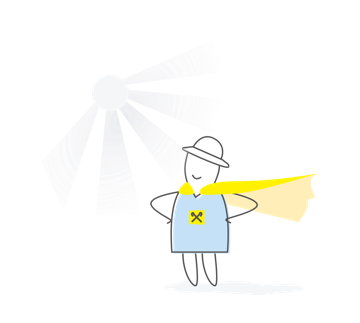The most current trends in international trade
During the global quarantine period, the logistics have undergone major changes. This hit international trade. Isolation has become a format change even for world-class business events. Quarantines are ending, but changes are not. Evgeniya Litvinova, President of the Exporters Club of Ukraine, spoke at a webinar for entrepreneurs, members of the Merezha business social network about new trends and anti-crisis solutions.
The first trend: freight railway transportation
Air travel has dropped dramatically, with affordable flights becoming extremely expensive and unreasonable for most goods. Before quarantine, it was $ 1.7 per 1 kg, then it grew at lightning speed to $ 14.5 per kilogram. Comments, as they say, are unnecessary. Transportation by sea was carried out, but with restrictions, delays. At the same time, export contracts (especially with companies from "risky" countries) prescribe significant sanctions for interruptions in supplies. Against this background, the railway became an exit and anti-crisis solution. The growth of international rail traffic was over 15%. The first country that began to urgently develop this type of transportation was, for obvious reasons, China.
Previously, from 2011 to 2019, all routes bypassed Ukraine and not a single train that went from China to the EU stopped by. Since the beginning of the year, fortunately, the situation has changed, a dozen container trains to Europe have passed in transit. The first train from China directly to Kiev arrived in the middle of last month. Its route passed through Russia, which is important for the formation of the cost of the service and the timing. As a result, the terms and cost of transportation turned out to be very comfortable, which allows us to talk about a new way of export and import. Railway is the most promising, fastest and most affordable delivery option.
Exporters should take care that, despite pandemics, quarantines and other force majeure, they have alternative channels for supplying products to the customer. Moreover - so that the cost of delivery for him was unchanged if the entrepreneur is interested in maintaining long-term or long-term contracts and reputation.
Second trend: cross-border trade (TGT)
Cross-border trade is one of the areas of e-commerce, in which the seller and the buyer are located in different countries and carry out a transaction without crossing the border. TGT became a global trend, which also came from China, Alibaba Group became the "trendsetter". In 2019, the PRC passed a law on cross-border trade. A similar law was passed in Belgium, which has become a partner of China and a trade hub for the whole of Europe. A logistics center with a large area of duty-free warehouses has been created in the city of Liege. Goods are delivered by container trains and air. From the railway hub and by road, goods are sent to the EU countries.
Cross-border trade is conducted through online platforms and websites. They are connected to the tax office, to the customs office in the country of destination. The entrepreneurs deliver the ordered goods from duty-free warehouses, where they can store them for a long time without customs clearance. These are the same Aliexpress, iHerb, Amazon, etc. The products can be bought by both legal entities and individuals. For more details on the possibilities of TGT, see the link.
For example, let's say you ship wine to China at a cost of $ 6 per bottle. The goods are exported. To clear it through the usual system, you will have to pay 43.13% of the value on top: these are taxes, excise taxes, excises. Taking into account the cost of delivery (according to the "old" air prices), the cost of your products will reach 11.5 dollars. By adding margin, we will receive a product with a price at the level of well-known world suppliers. Whose wine do you think the consumer will buy for the same price? With THT, the bottle will cost $ 8. We will receive a duty of 0%, an MPE and an excise tax with a 70% discount. Such benefits are used in various countries of the world.
The possibilities of THT are especially relevant just during periods of quarantine, during crises ... When people's incomes fall, they begin to save first on themselves, then on animals, and last of all on children. Therefore, for TGT, those categories of goods are relevant that are aimed at these audiences, as well as equipment, household goods, etc. It is not relevant to sell large goods, for example, furniture, doors, large equipment under this regime, it is better to do it according to the usual scheme, since states set limits on the amount for which their citizens can purchase duty-free goods from abroad. In Ukraine, it is about 300 euros. The limit in China is 26 thousand yuan per year per individual.
The TGT scheme works great in China, EU, Malaysia, Thailand, Ethiopia, Rwanda. New countries are joining. Having duty-free warehouses in the country where you export your goods is a good opportunity to establish additional sales channels. Duty-free warehouses in different countries can be used to store non-cleared cargo, insuring yourself during periods of crises and epidemics.
The third trend: 90% of all purchases in the world during the pandemic went online
During the pandemic, the line between online and offline was blurred, including for international trade. Those who were able to quickly digitize their business remained afloat. Now supermarkets are looking at how actively certain products are being sold through online platforms (their own and others'), looking for top positions, placing goods that are in demand for free on their shelves. They find manufacturers themselves, buy back the goods ... This is an unconventional scheme, earlier it was the other way around - individual goods from the shelves (accessing which is an extremely expensive option for a manufacturer) migrated to online supermarket applications.
The fourth trend: exhibitions go online
The 127th Export-Import Exhibition, usually held in China, took place online in June. It featured virtual stands that demonstrated online the products and services of suppliers. Services for comfortable communication with visitors and potential partners were implemented. The exhibition was open 24 hours a day, as companies and visitors from different countries, from different time zones were presented.
This is a precedent demonstrating how the standard exhibition preparation process is changing. Instead of booths, hostesses and promoters, get ready to assemble a team of programmers, designers, photographers and make an interesting virtual product.
Moreover, the risks of repeated quarantines, local outbreaks and government response measures in the coming years are absolutely real. At the very least, it is very interesting and convenient. The cost of creating a real stand, printing handouts, foreign business trips are very large budgets and a limiting factor for small companies. So it is worth preparing for this reality and having a team, and preferably a ready-made virtual stand and online handouts.
Fifth trend: export / import through online platforms
This needs to be done now. There are a number of international specialized sites for various types of goods (primarily consumer goods), equipment, materials, etc. But, unfortunately, Ukraine belongs to the category of countries with a level of risk No. 1, and therefore opportunities in some areas (primarily equipment) are closed for us. But if you have partners in "not risky" countries, you can use them very profitably. At these sites, you can not only buy, but also very profitable to sell to foreign buyers, without even participating in exhibitions. These are ready-made distribution channels.
Sixth trend: TikTok is an unexpected distribution channel
TikTok is a global social network created in China where you can shoot and share short mobile videos. And also promote your brand. The resource competes with Facebook, Instagram and other networks for a young audience. It has about a billion users. With it, you can sell various products both through personal accounts and through brand pages. First of all, the resource is interesting for reaching the Chinese audience.
10 anti-crisis tips from Evgenia Litvinova
Create a risk map for your business and create a responsibility matrix.
Analyze all supply chains down to the partner partner level. Diversify logistics risks.
Think over backup supply schemes, find duplicate partners at all levels.
Find an alternative distribution channel in the country of presence. Customers can refuse or cease their activities, and the goods are delivered to the country.
Get involved in cross-border trade, bonded warehouses are a unique opportunity.
Create alternative products that are relevant in times of pandemics and crises.
Look for partners online through various systems and applications. The embassies of Ukraine in the countries of interest are actively helping in this.
Take part in online exhibitions, master this format.
Focus on online advertising and online sales.
Prepare a scheme for changing and adjusting activities in a situation of resumption of a pandemic.















